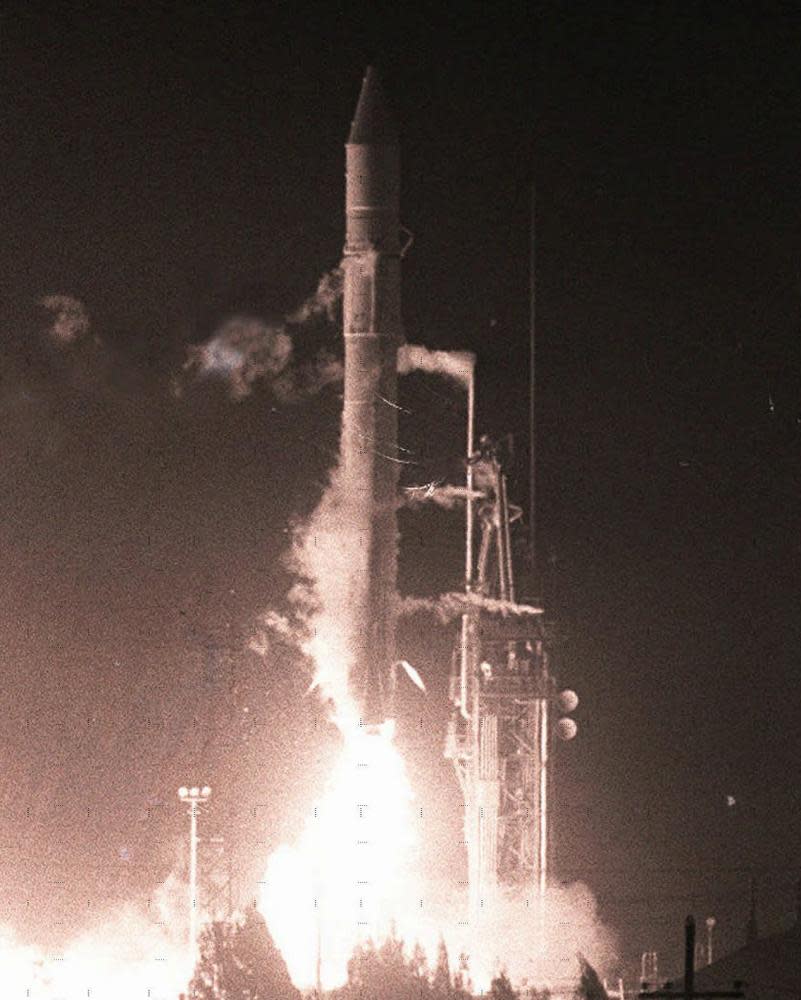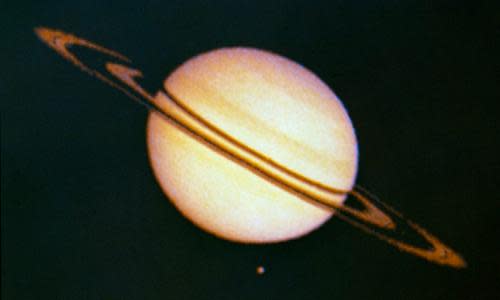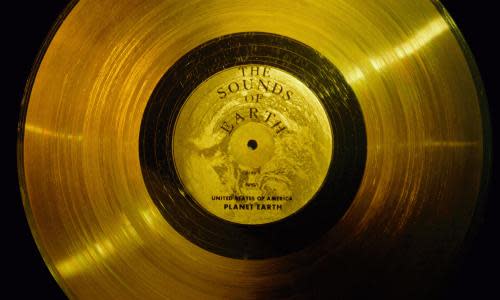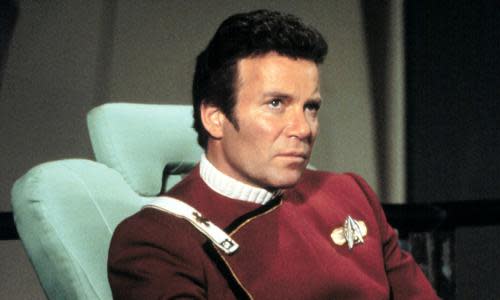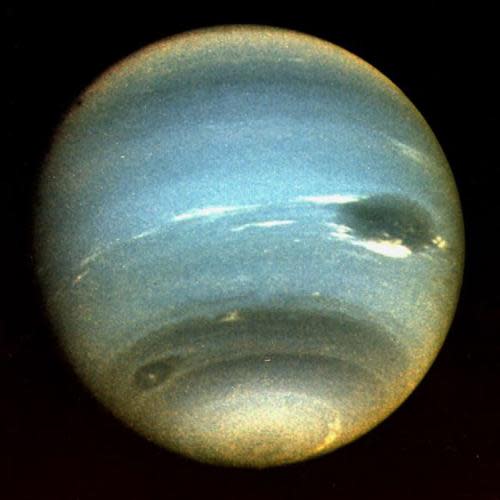Remember Pioneer 10? Test your knowledge of space probe missions

Fifteen years ago today, scientists at Nasa received the final faint signals from Pioneer 10, the first manmade object to leave the solar system. Over the years, her sister ship Pioneer 11 and the two Voyager probes have also embarked on the long journey to be emissaries for the human race among the stars.
How much do you remember about these groundbreaking space missions, the discoveries they made, and the strange objects they had on board?
Pioneer 10 and beyond …
The launch of Pioneer 10 Who was US president when Pioneer 10 was launched from Cape Canaveral?
Lyndon B Johnson
Richard Nixon
Gerald Ford
Jimmy Carter
Pioneer 10 became the first spaceship to make detailed direct observations and obtain closeup images of which planet in the solar system?
Uranus
Jupiter
Saturn
Neptune
In what year did Pioneer 10 depart the solar system, becoming the first man-made object to do so?
1989
1986
1983
1981
The gold-anodised aluminum plaque from the Pioneer 10 spacecraft Pioneer 10 carried a plaque on it, intended to convey information to any aliens finding it. It was designed by Carl and Linda Sagan with Frank Drake. What was controversial about it?
The nudity of the human figures
The ethnicity of the human figures
That the male figure was raising his hand
All of the above
Which of Pioneer 10's sister craft is the oldest mission that the Nasa website claims to be intact?
Pioneer 6
Pioneer 7
Pioneer 8
Pioneer 9
A picture of the planet Saturn taken by Pioneer 11 Pioneer 11 provided the first closeup pictures of Saturn's spectacular ring system. It also surveyed the planet's largest moon, Titan. How many moons does Saturn have?
12
17
31
More than 60
The golden record included on the Voyager missions The Voyager missions included golden records featuring "the sounds of Earth". These included greetings in many languages, recordings of natural sounds, and some musical excerpts. Which rock'n'roll song was included?
Hound Dog by Elvis Presley
C'mon Everybody by Eddie Cochran
Johnny B Goode by Chuck Berry
Bye Bye Love by The Everly Brothers
William Shatner as Captain Kirk in Star Trek II: The Wrath of Khan The return of a reprogrammed Voyager craft to the solar system is a major plot point of which Star Trek movie?
Star Trek: The Motion Picture
Star Trek IV: The Voyage Home
Star Trek VI: The Undiscovered Country
Star Trek: First Contact
Neptune as seen by Voyager 2 Voyager 2 flew by Neptune on its way out of the solar system, the first spacecraft to visit the planet. How many new moons did it discover?
3
4
5
6
An artist's rendition of the Voyager spacecraft How far away from the Earth is Voyager 1 currently?
17bn miles
13bn miles
9bn miles
5bn miles
Solutions
1:B - Pioneer 10 was launched on 2 March 1972, a month before Apollo 16 landed on the moon. Richard Nixon was president, two years away from resigning., 2:B - Part of Pioneer 10's mission was to observe Jupiter. As well as passing by the planet, it flew close to four of Jupiter's moons: Callisto, Ganymede, Europa and Io., 3:C - Pioneer 10 crossed the orbit of Neptune in June 1983, leaving the solar system. It had already crossed the path of Pluto, which, due to its elliptical orbit, was closer to the sun than Neptune at that point. And this was also when Pluto was still classed as a planet. Poor Pluto., 4:D - The design was criticised both for the fact that the human figures were depicted nude, and for the fact that the man's genitals are shown in greater detail than the woman's. Sagan said he had intended the figures to appear "pan-racial", but they have been criticised for looking Caucasian to the exclusion of other ethnicities. Critics also questioned why the man is depicted making a greeting gesture while the woman is shown as passive. The chances of aliens ever finding the plaque are extremely remote, however, so the arguments about the contents will almost certainly remain earthbound., 5:A - Pioneer 6 was launched to explore the sun in December 1965. Nasa continued to track the craft after its mission was completed, and incredibly, in 2000 – 35 years after it was launched – the craft was successfully contacted for two hours, using its backup transmitter., 6:D - Saturn has a lot of moons – so many that not all of them have been named. Titan is the largest, bigger than the planet Mercury and with its own atmosphere. Dione, Enceladus and Hyperion are other significant satellites. Some of the smaller ones have diameters of less than 6 miles (10km)., 7:C - Chuck Berry got the nod to represent rock'n'roll, on a disc that also featured pieces by JS Bach and Beethoven, and a traditional chant from the Navajo tribe. Voyager also carried equipment for aliens to be able to play the recordings, if they could work out what to do with it. Human listeners will be pleased to know the disc was reissued on vinyl last year to mark the 40th anniversary of its departure., 8:A - It was the first Star Trek movie that saw the newly reunited – and somewhat older – crew of the USS Enterprise investigate a mysterious menace to the planet Earth, with an old returning space probe called Voyager at the heart of it., 9:C - The probe's observations revealed five new moons, named Naiad, Thalassa, Despina, Galatea and Proteus, as well as confirming the existence of Larissa, first discovered in 1981. It also flew close to Triton, Neptune's largest and longest-known satellite, discovering that at -235C, it was the coldest measured body in the solar system., 10:B - The craft is currently around 13bn miles (21bn km), from the planet that sent it into space. Nasa's website for the Voyager mission has a real-time counter indicating the distance, and explains that due to the revolution of Earth's orbit, at some points of the year, the distance actually decreases.
Scores
3 and above.
Stellar effort
0 and above.
You've struggled to get off the ground here
7 and above.
You're out of this world
Sources for questions: Nasa, Space.com

 Yahoo News
Yahoo News 